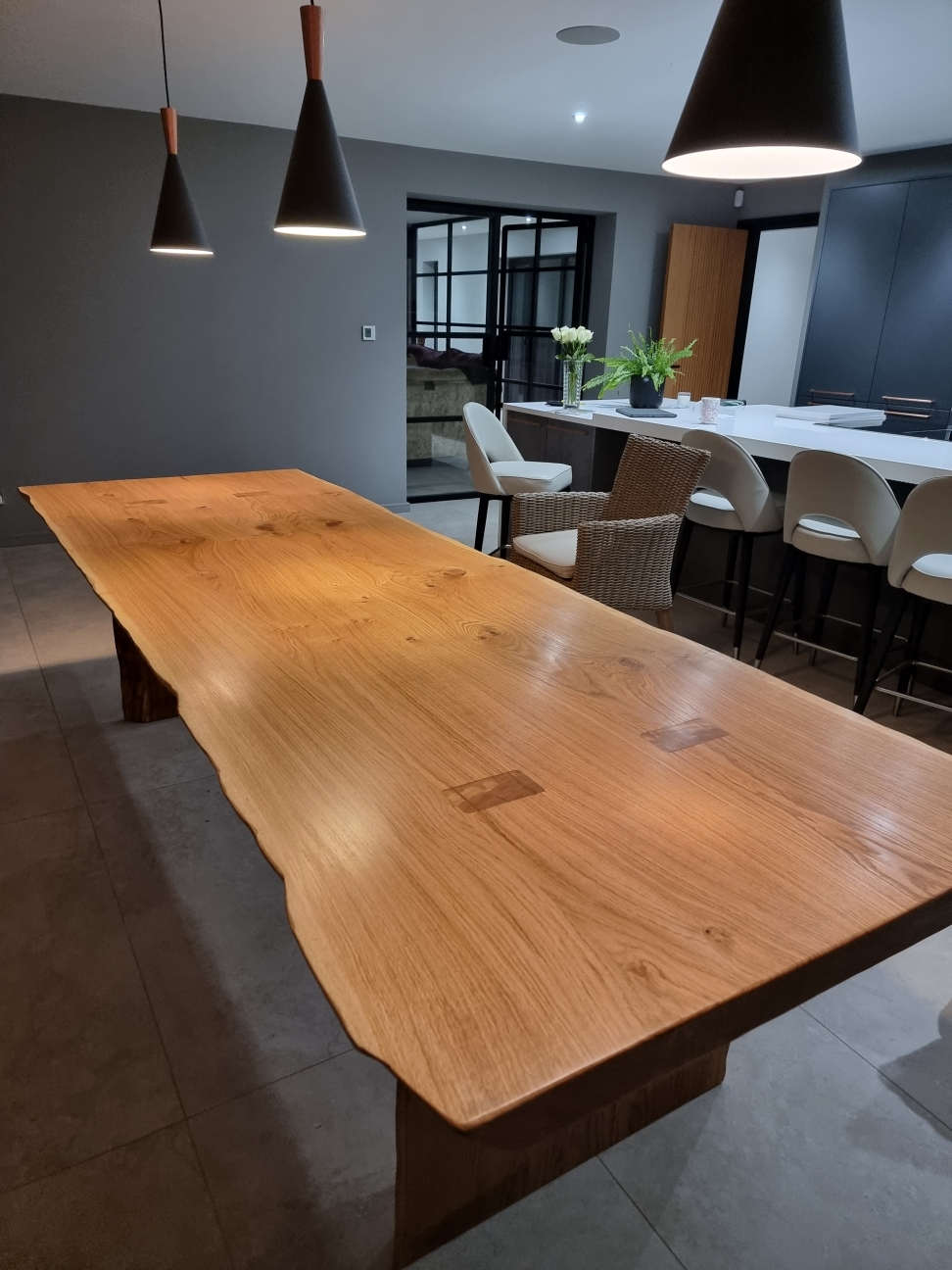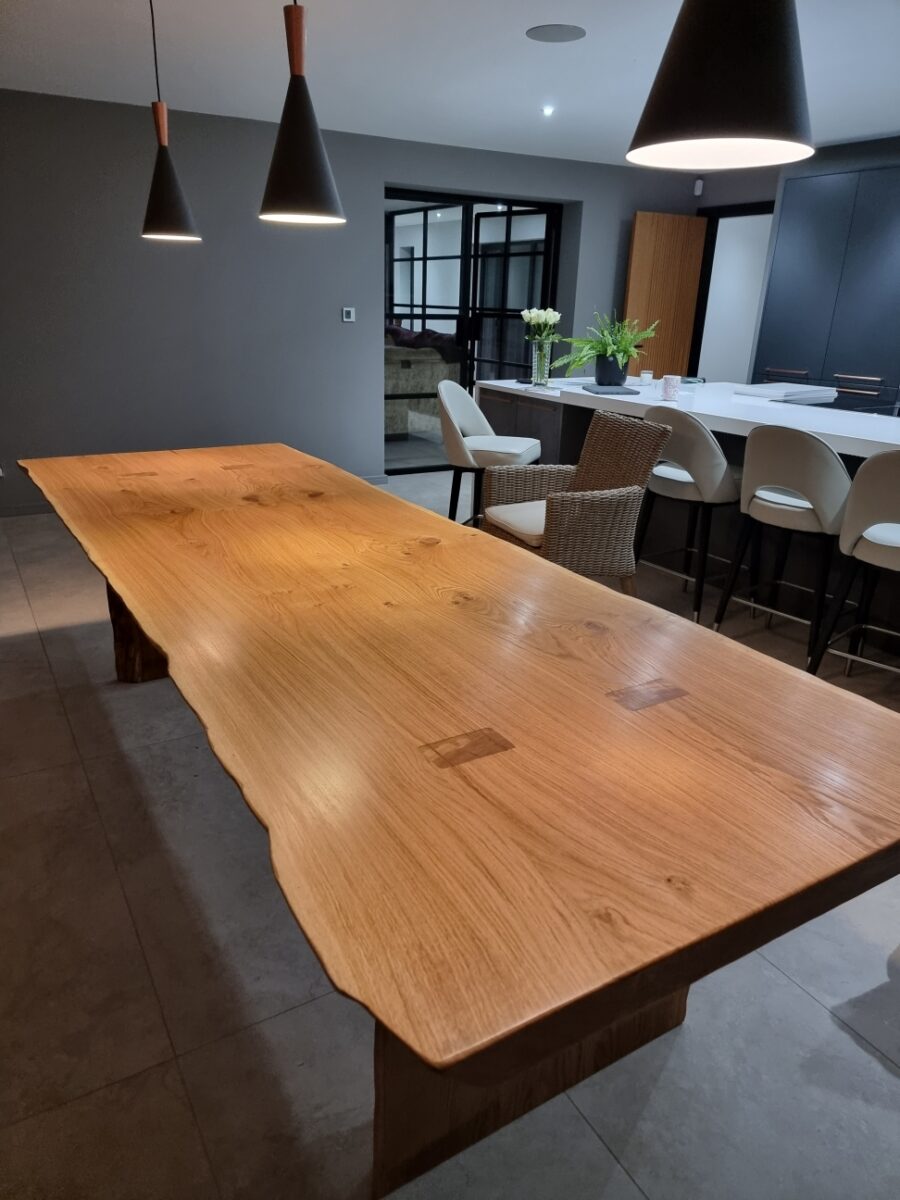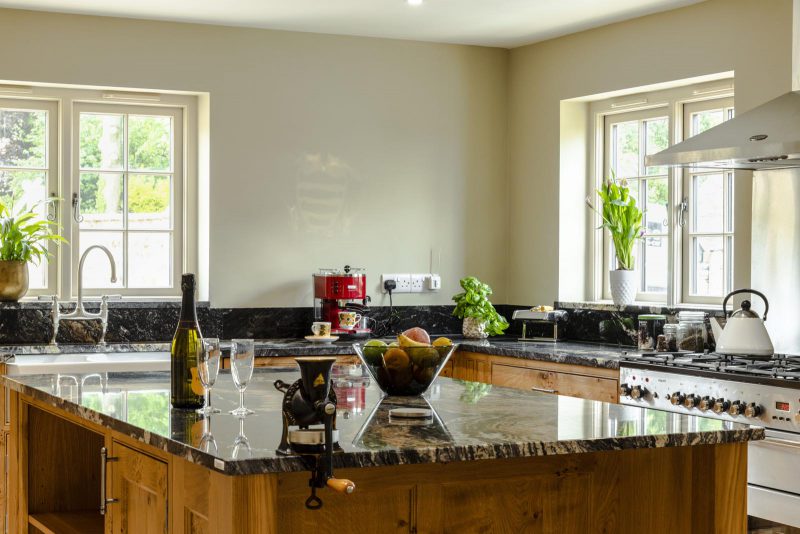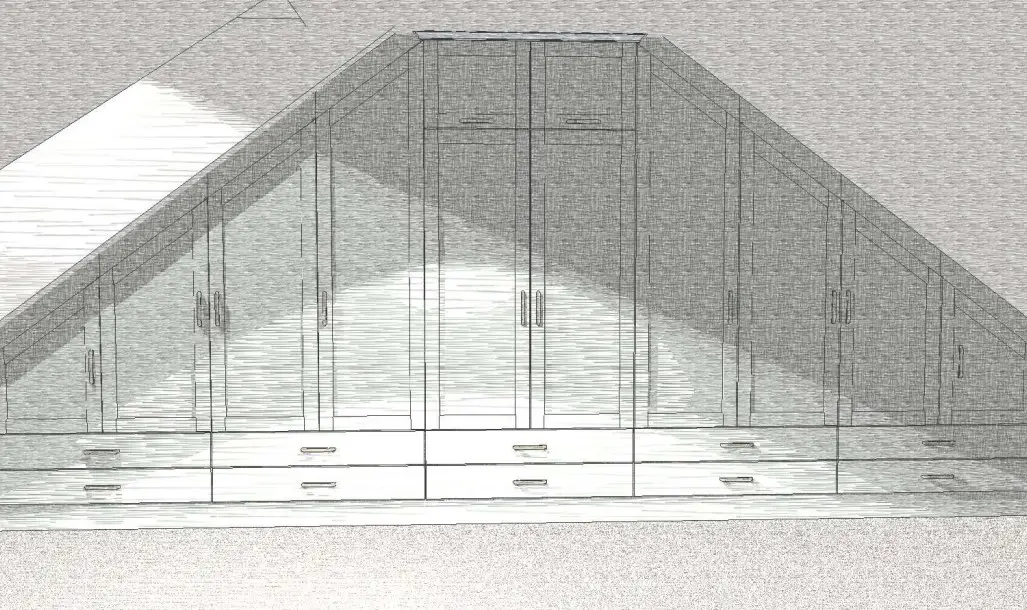The dining table has always been an essential part of home life, but in recent years, it has evolved into a true centerpiece of modern living. No longer just a place for meals, it’s become a multifunctional hub for family gatherings, work-from-home setups, and entertaining. The demand for bespoke dining tables has surged, with homeowners seeking pieces that not only fit their spaces perfectly but also reflect their personal style and needs.
Solid wood dining tables have become more popular in recent years, in line with the growing trend towards sustainable, long-lasting furniture that combines timeless appeal with the warmth and character of natural materials.
Let’s explore the key design elements that make a bespoke dining table not just another piece of furniture, but a centerpiece of modern homes.
Determining the Right Size
Getting the dining table size right is crucial. Several factors should be considered.
Room Size and Layout
The table should be proportionate to your room. Ideally, leave at least 90cm of space around the table for chairs and circulation. In open-plan layouts, the table can help define the dining area within the larger space.
Seating Capacity
Think about how many people you need to seat regularly. For occasional larger gatherings, you might want to consider an extendable table.
For optimal comfort, aim for about 75cm between chairs. This ensures diners have enough elbow room and can easily get in and out of their seats.
The Right Table Width
Standard dining tables are typically around 90cm wide. This allows enough space for place settings and shared dishes in the center. However, some homeowners are opting for wider tables to accommodate more generous place settings or family-style dining.
Tables that are 100-120cm wide offer more flexibility. They provide ample space for table decorations, serving platters, and even workspace for those who use their dining table for tasks beyond eating.
Choosing the Perfect Shape
The shape of your dining table can significantly impact both its functionality and the overall aesthetic of your space. Let’s explore the most popular options.
Rectangular Tables: Traditional and Versatile
Rectangular tables are the classic and most common choice. They work well in most spaces and can accommodate a large number of people.
Round Tables: Space-Saving and Intimate
Round tables are excellent for smaller spaces or for creating a more intimate dining experience. They encourage conversation and can often seat more people than you might expect in a compact area.
Oval Tables: Combining Elegance and Practicality
Oval tables offer a nice middle ground between rectangular and round shapes. They provide the linear quality of a rectangular table but with a softer, more organic feel.
Materials and Finishes
The choice of materials and finishes is where bespoke dining tables truly shine, allowing for endless customization possibilities.
Solid Wood Dining Table Options
Hardwoods
Hardwoods are a popular choice for their durability and aesthetic appeal. Oak, for instance, is known for its durability and versatility, featuring a distinctive grain pattern. Pippy oak, with its distinctive clusters of small knots, offers a striking and rustic option for a custom dining table, combining the durability of oak with a visually intriguing surface. Walnut, with its rich, dark tones and straight grain, is ideal for more formal settings. Maple, on the other hand, offers a light color with a subtle grain, making it perfect for contemporary designs.
Softwoods
Softwoods provide another set of options. Pine is an affordable choice with a light color, often used for rustic or country-style tables. Cedar, known for its aromatic qualities and reddish hue, offers natural resistance to decay, making it a practical choice for certain settings.
Exotic woods
For those seeking something truly unique, exotic woods can make a striking statement. Teak is highly durable and water-resistant, popular for both indoor and outdoor furniture. Zebra wood, with its striking striped grain pattern, is often used for statement pieces that demand attention.
Metal Options
While less common for entire table tops, metals are often incorporated into table designs to add visual interest or structural support. Steel can provide an industrial look and is often used for table bases or inlays. Brass adds a touch of luxury and warmth, making it popular for accents or legs.
Finishes and Treatments for Solid Wood Dining Tables
The finish of a table can dramatically alter its appearance and durability. Stains and varnishes enhance the natural color of the wood while providing a protective layer against spills and scratches. Oils and waxes penetrate the wood to protect it from within, offering a more natural, matte finish that’s easy to reapply for ongoing maintenance. Paint and lacquer can completely change the color of the wood, providing a smooth, often glossy finish that can transform the table’s appearance to match any decor style.
Solid Wood Dining Table Edge Designs
The edge of a table is more than just a finishing touch; it’s a design element that can dramatically alter the table’s character. Specifically for solid wood dining table tops, you can consider the following:
Straight Edge
A straight edge offers a clean, modern look. This style is characterized by its crisp lines and minimal ornamentation, making it ideal for contemporary interiors. The simplicity of a straight edge allows the beauty of the wood grain to take center stage.
Beveled Edge
A beveled edge softens the look of a straight edge by angling the top edge of the table. This subtle detail adds a touch of elegance and can make a thick tabletop appear lighter and more refined. It’s an excellent choice for those who want a bit more visual interest without straying too far from a clean, modern aesthetic.
Bullnose Edge
Fully rounded along the top and bottom, a bullnose edge creates a soft, inviting profile. This style is not only visually appealing but also practical, especially for families with young children, as it eliminates sharp corners. The gentle curve of a bullnose edge can add a sense of fluidity to the table’s design.
Live Edge
This style celebrates the natural contours of the tree, preserving the organic shape of the wood slab. Live edge tables are unique works of art, each telling the story of the tree it came from through its knots, burls, and undulating edges. This style is perfect for those who want to bring a touch of nature indoors and create a striking focal point in their dining space.
Waterfall Edge
In a waterfall edge design, the wood grain continues seamlessly from the tabletop down the sides, creating the illusion of water flowing over the edge. This sophisticated technique requires exceptional craftsmanship and results in a table with a strong, sculptural presence. Waterfall edges are particularly effective on tables made from wood with distinctive grain patterns.
Bespoke Dining Table Leg Designs
The base of a table provides support but can also provide opportunities for striking design choices.
Traditional Four-Leg Design
This timeless style offers stability and a touch of traditional craftsmanship. Turned legs, with their curved profiles and decorative details, add visual interest and can range from simple to elaborate, depending on the desired aesthetic.
Pedestal Base
Unlike the traditional four-leg design, a pedestal base typically consists of a central support structure, often in the form of one or more columns or pillars, that extends from the floor to the underside of the table top. This can be a single central column or multiple columns arranged in various configurations.
Pedestal bases offer several advantages: they maximize legroom, allow for flexible seating arrangements, and can create a more open feel in the dining space. The substantial bases in this example add a contemporary twist to the traditional pedestal concept.
Trestle Base
Trestle bases consist of two or more supports connected by a horizontal beam. This design offers excellent stability for long tables and brings a rustic or farmhouse charm to dining spaces. Trestle bases can be crafted in various styles, from simple and sturdy to ornate and decorative.
Hairpin Legs
These thin, metal legs provide a mid-century modern aesthetic. Their minimalist design creates a light, airy feel, making them ideal for smaller spaces or when you want the table top to be the star of the show. Hairpin legs offer a striking contrast when paired with a substantial wooden top.
X-Frame or Cross-Leg Design:
If you are looking for an industrial, modern dining table style, this may be for you. This design features legs that cross in an X or V shape. It adds a contemporary or industrial touch to the table, especially if dark metal is used. X-frame bases can be particularly effective in creating a sense of visual lightness while still providing robust support.
Incorporating Dining Tables into Your Home
Open-plan living spaces continue to be popular, and dining tables play a crucial role in defining these areas. To create cohesive spaces, the dining table should complement both the kitchen and living area aesthetics.
The dining table can be an extension of your kitchen design, creating a harmonious flow between spaces. Look for ways to echo elements like styles and color schemes from your kitchen and living areas in your table design.
Balancing Form and Function
While aesthetics are important, don’t forget practicality. The finish of your table should be durable enough to withstand daily use, especially in busy family homes.
The Craftsmanship Behind Bespoke Tables
Creating a truly bespoke dining table requires exceptional skill and attention to detail. Artisans like those at Scawton Kitchens combine traditional woodworking techniques with modern design sensibilities to create pieces that are both functional and beautiful.
Conclusion
A bespoke dining table is a centerpiece that reflects your style and meets your specific needs. By carefully considering size, shape, materials, and design details, you can create a table that perfectly fits your space and enhances daily life. From elegant live edge designs to bold rectangular pieces with unique bases, custom tables offer endless possibilities to bring your dining room vision to life.






